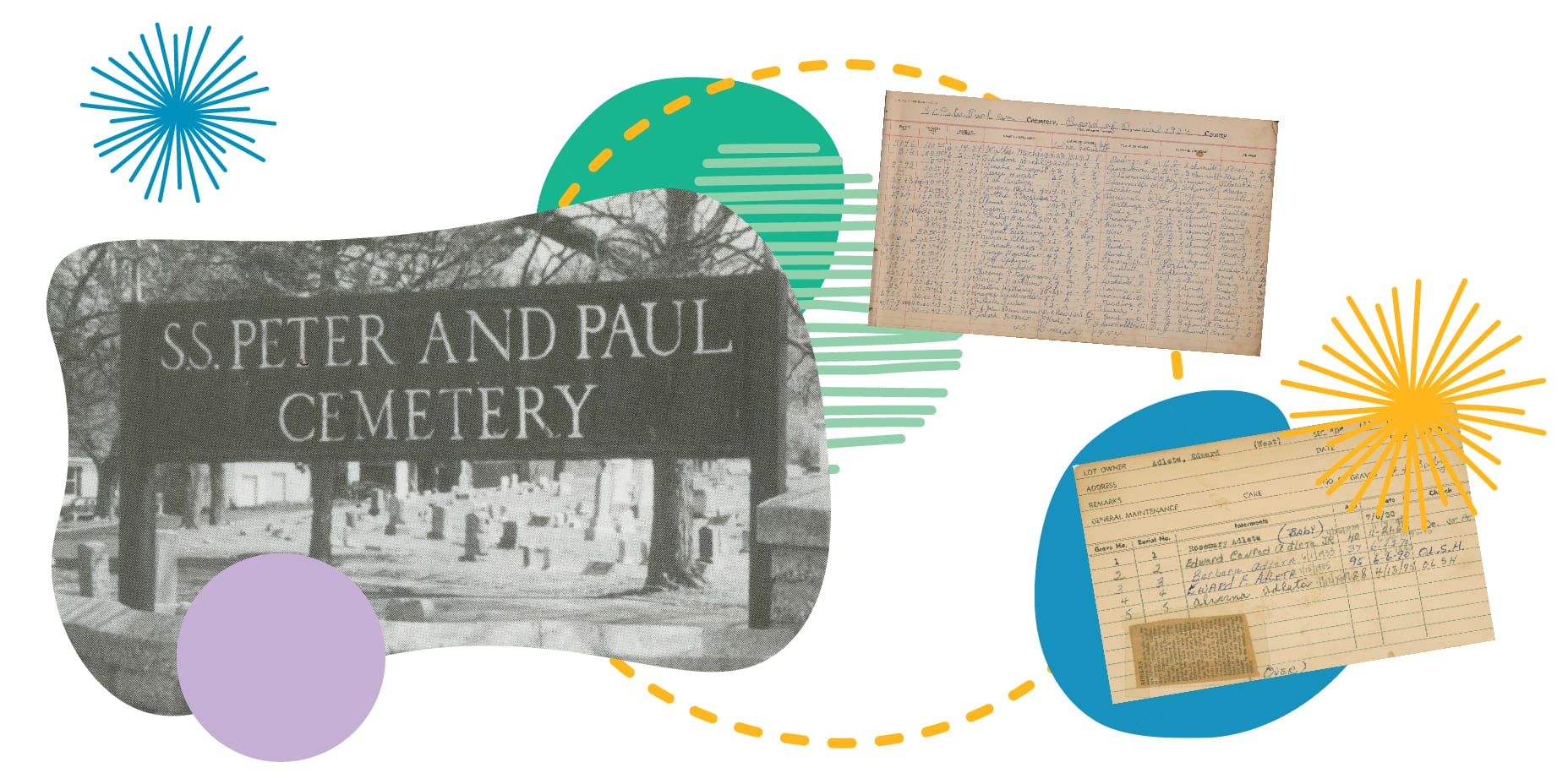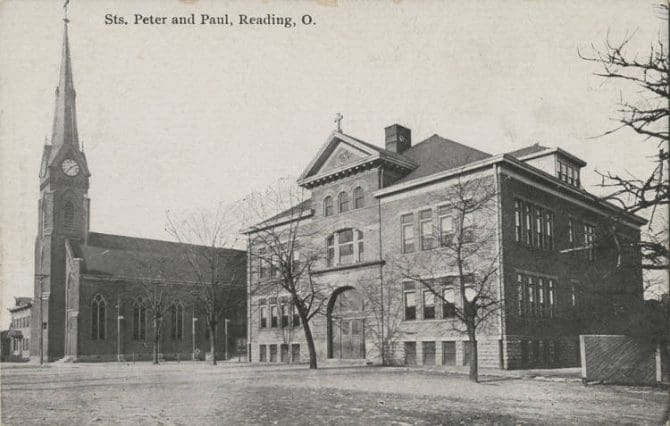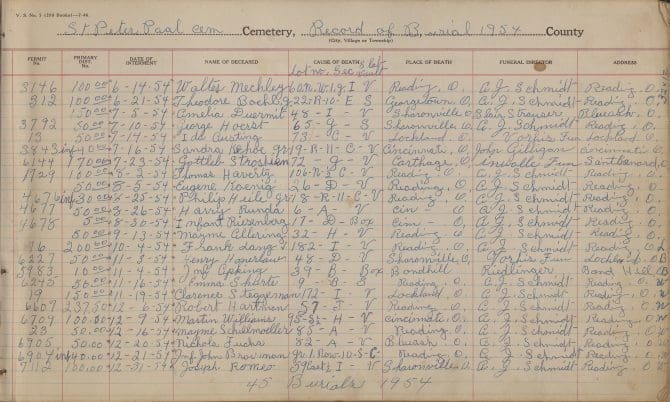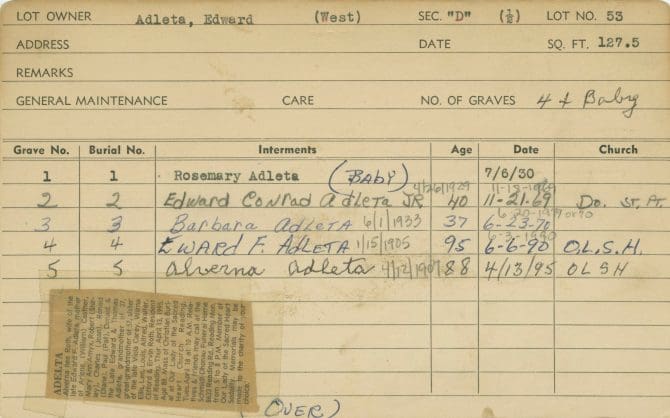 Written by Whitney Reynolds, Digital Services Assistant, Genealogy and Local History, Downtown Main Library
Written by Whitney Reynolds, Digital Services Assistant, Genealogy and Local History, Downtown Main Library
On the first Thursday of each month, our Genealogy and Local History Department "throws back" to a time in Cincinnati's history that is featured in our Library's wide-ranging collection of more than 9 million materials.
Sprawling across 13 acres of land alongside Reading Road in Reading, Ohio sits a cemetery dating back to 1880. Join us as we explore the history of Saints Peter & Paul Cemetery and how in digitizing its records, an invaluable trove of local history is now available online to the public.
The Founding of Saints Peter and Paul Cemetery
Reading, Ohio was first settled in part by James Cunningham’s family and later the Voorhees and Redinbo families during the late eighteenth and early nineteenth centuries. As early as 1799, Voorhees Sr. began sectioning land into plats and advertising them for sale. By 1809, Reading is said to have had twenty houses and two taverns with a population estimated between 60 and 80 residents. After Reading became an official village of Hamilton County in 1851, Saints Peter & Paul Cemetery (SPPC) was incorporated on December 20, 1880. Originally associated with the Catholic Church of the same name, presently the cemetery operates as a private, not-for-profit association accepting burials or cremains of all denominations and spiritual backgrounds.
Digitizing Local History
Earlier this year records from SPPC were brought to the Library to be digitized. The record books span over a century and contain valuable information for researchers and family members, including the deceased’s date of death, date of interment, and deeds dating back to the cemetery’s earliest days. These records as well as individual index cards for each plot purchased were first examined by CHPL’s Genealogy and Local History department to be assessed.
The cemetery’s record books were found with mold damage and needed to be treated by The Preservation Lab, opens a new window, a collaboration of CHPL and the University of Cincinnati Libraries, before they could be digitized. Once the records were treated and deemed safe for handling, the books were placed in the cradle of CHPL’s new i2S book scanner where each page was carefully photographed under glass.
Preserving 4,846 Historical Records
In addition to the cemetery’s record books, six full drawers of individual plot index cards were digitized. A total of 4,846 plot cards were placed individually on the Library's Epson flatbed scanner for digitization. Information on the cards includes the plot owner, cost of the plot, number of graves, location of the plot, as well as who is buried, their age, and the date. All of these records give family members, genealogists, and researchers a valuable, detailed insight into the deceased’s life.
The records were then digitized and edited by library staff, and are now available to view online through CHPL’s Digital Library, opens a new window – free for the public to access online from anywhere at anytime.
More to Explore
Follow in the footsteps of our Genealogy & Local History Department in their journey to preserve these genealogical and local history treasures. View high-resolution photos and documents in our Digital Library, library catalog, and resources used to inform this month’s Throwback Thursday post:





Add a comment to: Throwback Thursday: Preserving the Records of Saints Peter & Paul Cemetery